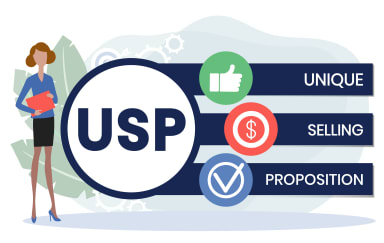Setting prices is a complicated process. Do you dare price yourself above your competition? What about offering extras to increase your offer’s value? And then there’s the whole issue of discounting. It’s no wonder salespeople and business owners waiver when challenged by cost conscious customers. Here are 10 rules that will give you and all your employees confidence in your prices.
In reality, pricing is far from simple. Setting the optimum price for products and services is one of the most difficult decisions managers ever make. But when your prices don’t reflect the value of the offering, are wrong for the type of customer, or don’t make sense under current market conditions, every sale you close could be leaving money on the table.
The solution is creating a set of guidelines that give salespeople confidence in your pricing. With pricing confidence, when the purchasing agent says your competitor’s products are cheaper than yours, your salespeople will have the confidence to explain how your company offers a higher value. Now the purchasing agent is on the defensive. If the purchasing agent insists on a lower price, he can get it but will have to accept a lower-value product. Whether the customer buys your lower-value product offering (whose price beats the competition) or the higher-value product (whose performance beats the competition), you come out ahead. That’s confidence in pricing.
Here are ten rules that will give everyone at your company pricing confidence.
1. Replace the discounting habit with a little arrogance. Price discounting is entrenched in most organizations. The best way to dislodge any deep-rooted attitude is to replace it with another. Arrogance–feeling good about your products and services–provides the confidence needed to kick the discounting habit.
2. Understand the value you offer to your customer. You can’t have confidence in your pricing until you have confidence in the financial value that your offerings create for customers. Most of your customers are eager to tell you. All it takes is asking the right questions and being willing to listen.
3. Apply one of three simple pricing strategies. Know when to price high, when to price low, and a strategy for everything in between. To create confidence in your prices, strategies can and should be simple and agreed to by everyone in the firm.
4. Play better poker with customers. Understand the four types of buyers, and develop a pricing strategy for each one. The trickiest is the fourth type–poker players, who love to play the pricing game and have learned that if they focus on price, they can get vendors to leave money on the table but continue to provide high-value features and services. Knowing the strength of your own hand–the value you offer–gives salespeople confidence to resist the temptation to close at any price.
5. Price to increase profits. It’s a myth that if you discount price to increase sales, you will see increased profits. Profits result when an organization does many things right, including simplifying costing approaches so they permit more effective use of your company’s resources, be they people or machines. Efficiency, controlling costs, better profit metrics–all are required for pricing success.
6. Add new products and services that give you negotiating flexibility and growth. When your products are regarded as commodities, add services to differentiate products and prop up prices. An effective strategy for market dominance is to develop a dual offering that covers both the high- and low-end customer needs. If customers want a lower price, subtract features and services.
7. Force your competitor to react to your pricing. Smart players know they don’t have to participate in a competitive pricing death spiral. Every player enjoys one or more value advantages. Map your markets. Define where you do and do not have a value advantage over your competitors. Know where and how to compete on price–and where and how not to.
8. Build your selling backbone. To have confidence in negotiation, salespeople and managers need confidence in pricing. Confidence in pricing comes from knowing the value of your products or services. It also comes from knowing your customer. Backbone comes from knowing the tricks your customers use to get you to drop price and how to deal with them.
9. Take simple steps to move from cost-plus to value-based pricing. There is nothing wrong with cost-plus pricing as long as it does a good job of leveraging the financial value you create for customers. Value-based pricing is an ideal. It requires sophisticated internal skills and systems. The trick to value-based pricing is to evolve pricing as the discipline and skills of your people improve. Start gradually. Once you learn those skills, moving forward to real value-based pricing is a snap.
10. Price with confidence: Remember who you are. Shift the negotiation to how you provide concrete results for your customers. Customers buy results, not rhetoric. Moving beyond the rhetoric of value will enable you to prove those results to customers.
Reed Holden, DBA, and Mark Burton are leading pricing gurus and cofounders of Holden Advisors (holdenadvisors.com), a consultancy that works with business-to-business firms to design and implement value-driven pricing strategies that increase profitability in highly competitive markets. They are coauthors of Pricing with Confidence: 10 Ways to Stop Leaving Money on the Table (John Wiley & Sons, 2008).




